How now! What's that yellow beacon on the horizon?
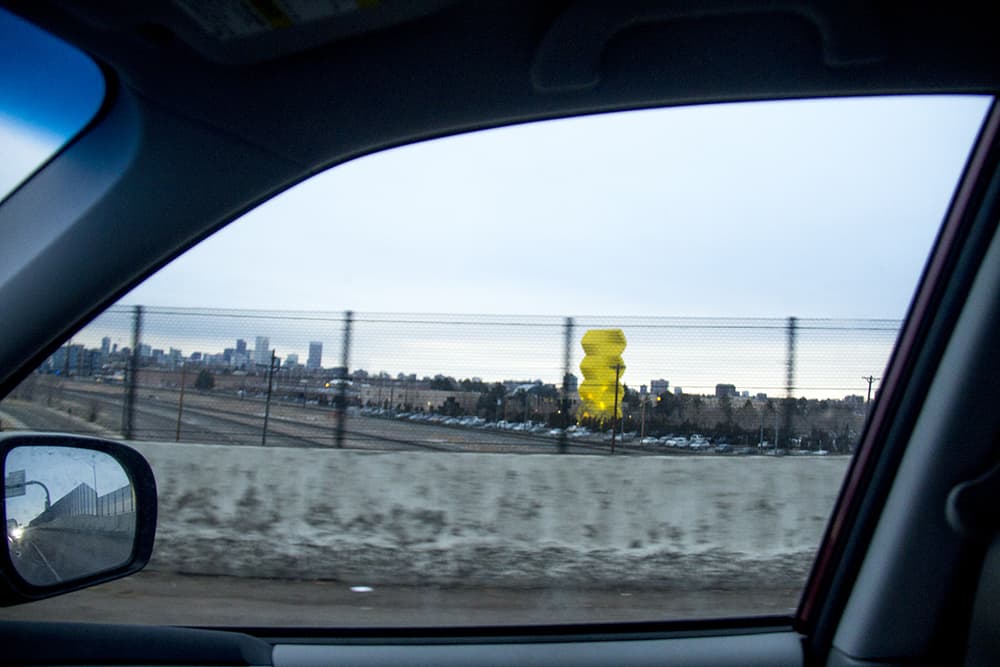
Yes, we've all seen this gleaming helix from the highway, but what is it?

Turn right off Broadway onto Center Avenue and you'll begin to see what is not a stack of french fries but instead is called the "Articulated Wall," the landmark of the Denver Design Center and one of the city's most recognizable, and perhaps least understood, works of public art.
The articulated wall was the last completed work of famed Bauhaus artist and designer Herbert Bayer, a refugee from Hitler's Germany who was internationally known for his work in fonts and graphic design. According to his obituary in the New York Times, Bayer's work set the tone for future design in American advertising and even made Aspen the high-brow mountain town that it is today.
The 85-foot-tall work was dedicated in 1985, the year of Bayer's death.

Besides saying that "climbing on the sculpture is prohibited," a plaque beneath the massive sculpture states that Bayer was particularly interested in its viewing from I-25, foreseeing that it would transform as observant drivers headed northbound.

The Wall is actually not 100 percent original. In '86 the Denver Design District, the city's premiere interior design hub, moved from downtown to its current home in Baker. Around that time, the developer visited Mexico City where he saw the first edition of the Wall, a smaller version, which was erected for the 1968 Olympics there. It was soon after that Herbert Bayer was commissioned to make a larger version.
The massive yellow spire we know today is comprised of 33 prefabricated concrete pieces weighing over 2 million pounds and held together by an aircraft refueling mast in the center.
Now another question: What the heck is the Denver Design District?
"Do you watch HGTV? This is the place," says receptionist Renee Lancaster, whose mind is filled with facts about the place.

You can't just walk into the District's many showrooms and buy a chair or chandelier to your liking. The furniture and furnishing hub is a wholesaler, and only makes deals with licensed designers and contractors who have been approved.
That said, you are more than welcome to peruse the galleries, then go find your favorite licensed designer to help you pick out the throne or bed of your dreams. The Denver Design Center, the District's mothership, even has a designer on hand at any given time who can help you make your purchase.
Lancaster says this is all part of an effort to engage with regular people, something that's fairly new in the last five years.
It's no wonder the wholesalers are trying to attract passers-by. They were in something of a financial pickle after the housing bubble burst and consumers had less of an appetite for finer furnishings.
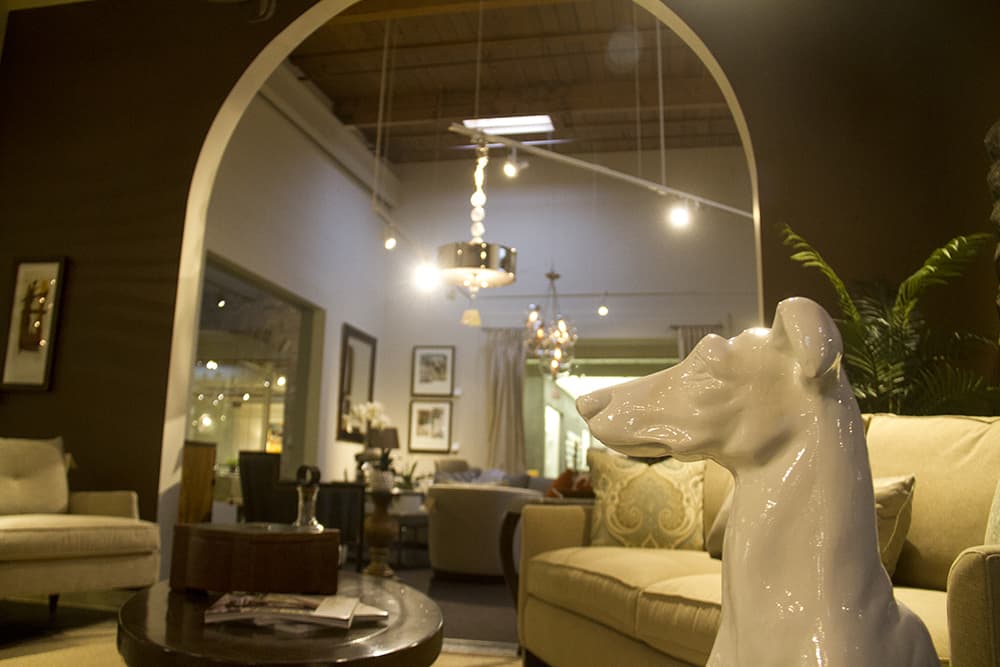
Nevertheless, there's plenty to ogle if you find yourself gravitating toward the Articulated Wall like a bug to a bulb (which it seems is more than an apt analogy). You might find you enjoy a walk through this menagerie of textiles and fixtures.
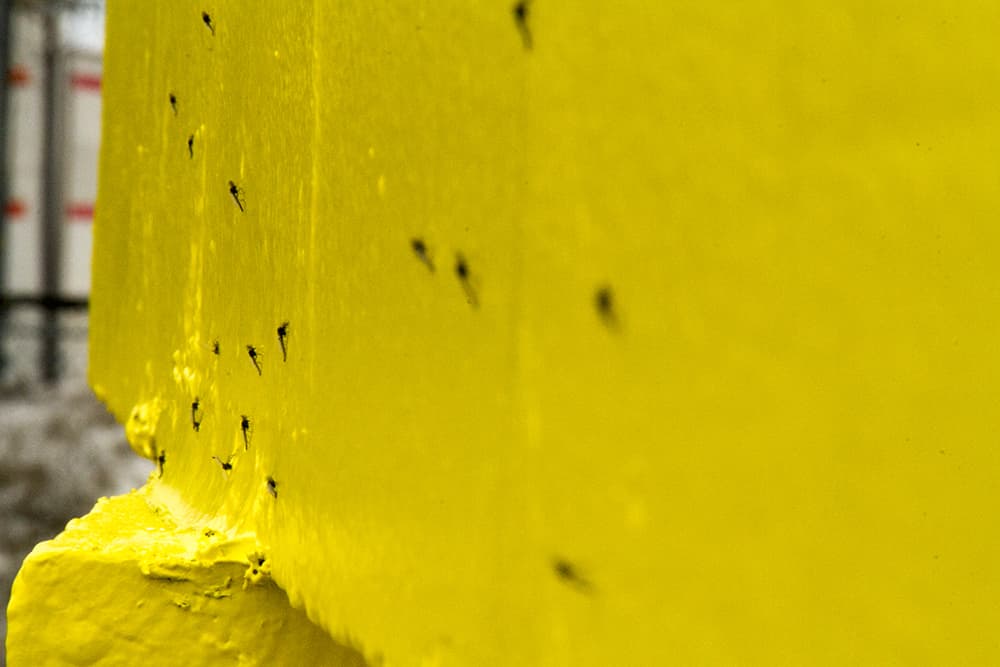
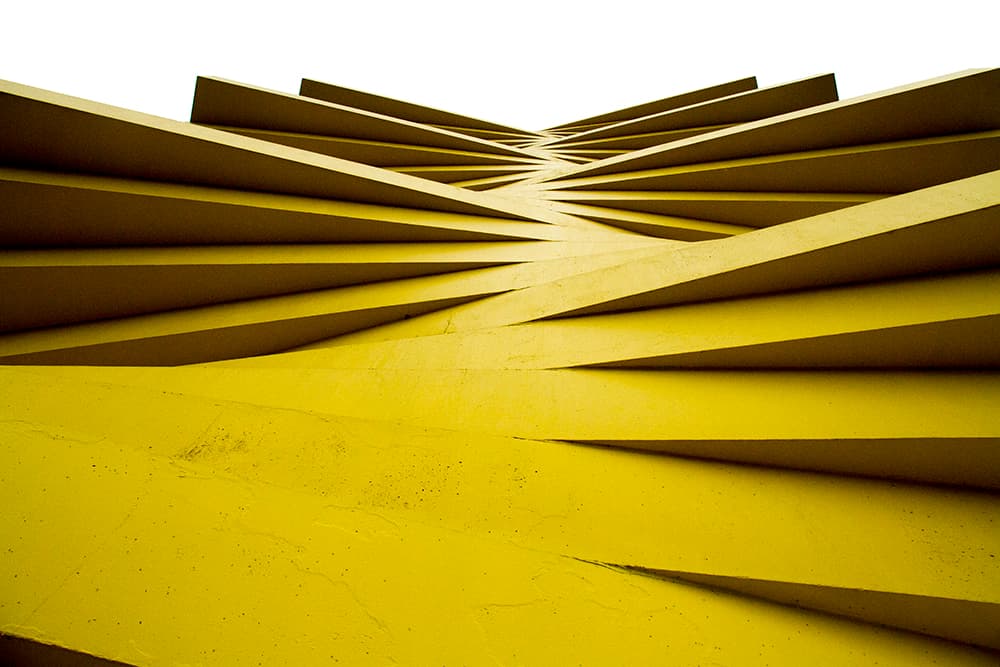

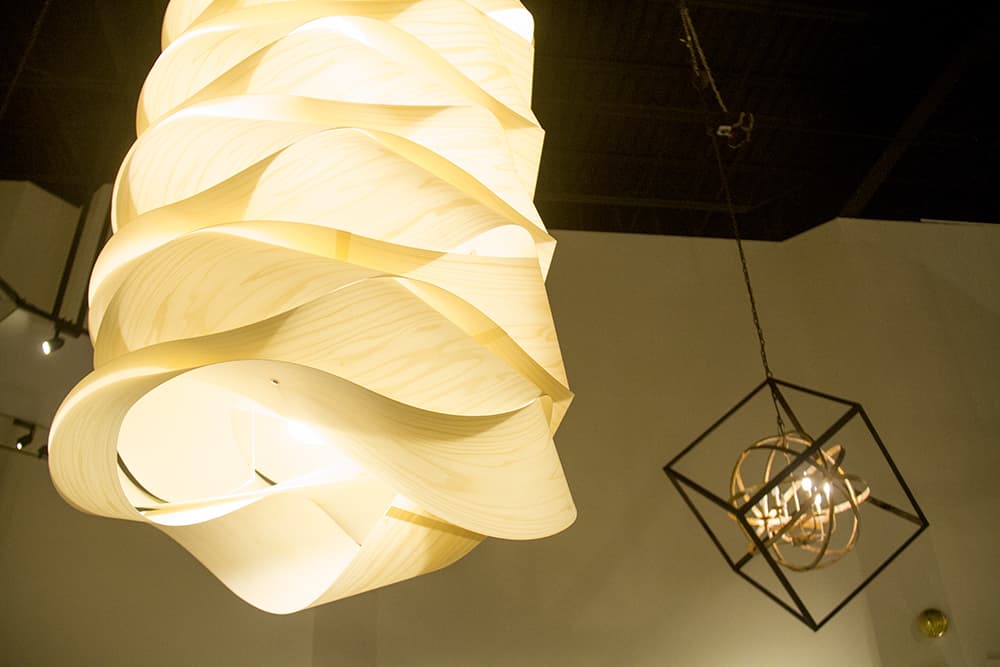
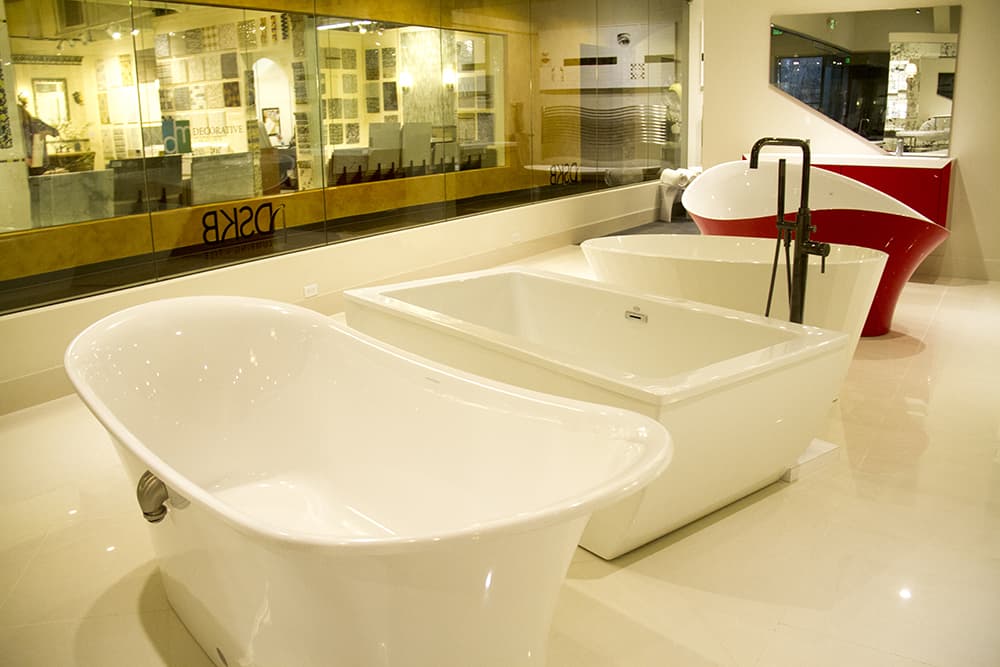
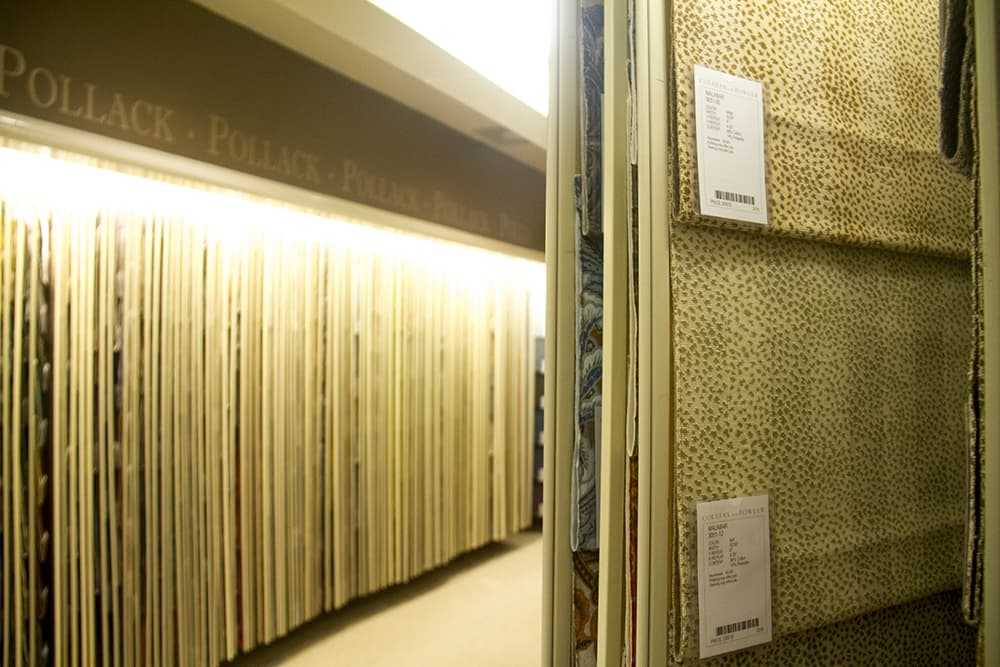
Correction: “Articulated Wall” is comprised of 33 prefabricated concrete slabs. This story has been updated to accurately reflect the number of slabs in the artwork.












